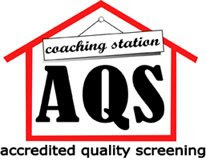- We mentioned in our earlier posting 'tools' used in our proven research amongst pupils from Malaysian schools. In most rural or semi-urban setting schools are rushed in completing the 'testing' or 'examination' curriculum so that the taught syllabus distorts from the necessary lesson requirement, both in content level and pedagogy.
- Therefore we introduced the term BILAS, (adopting the Malay word bilas for 'rinse'), to propose that pupils go through a language rinsing process before the move to secondary education. Our BILAS or Bahasa Inggeris Latihan & Ajar Semula tools refer to books that could be used as practice sets. These are recommended supplemental materials other than the present books used by teachers as practice-for-examination sets.
- We recommend a foreign set here, as we believe that the transition from foreign language to second language mode can only be achieved once pupils have gone through enough drill practice and structured usage. Language is still about sounds, and CERAP removes the confusion flowing from present situation where first and second language share the same script or alphabet.
- In the present learning environment pupils' only contact with the language is from the adhocism generated by lessons meant to beat the examination system, which produced dysfunctional English for the majority.
- The better ones manage due to exposure from usage at home or because their parents introduce them to correct practice at an early stage-the rest are false beginners.
- terrabaca management offers you an opportunity to catch up and make the quantum leap using CERAP.
BILAS 1
Basic Literature in Storytelling Mode
We have experimented using Ladybird's Favourite Tales & Classics Collection for Remedial and Enrichment (for listening skills) in rural Malay schools effectively. The book and audio segment, the logistics nightmare, as some teachers put it, has to be addressed. For a basic reading room what is needed is a cassette player (optional) and either a Japanese table (UPSR) or a table to fit 10 chairs (PMR). Most schools have media rooms but for the creative, sessions could be held under the tree in the school garden.
This is the most effective component, as pupils tend to progress rapidly once they recognize sounds from words they are familiar with but never asked to say out loud. This familiarity is now enforced through constant writing, through copying of all words pronounced, through spelling drills etc. And the audio component is a favourite amongst students as they get the chance to mimic and all.
The storytelling mode draws out students from their shell of "abashment" and brings out the “literary types” where fluency is concerned. This component is to fill one of the missing gaps in language teaching - the development of listening skills leading to reading skills.
There are abundant photocopiable material from the web for the creative student or teachers to compile a set of class readers. We hope to provide the links to some of these sites later.
BILAS 2
Hidden Grammar - Key words in Read aloud mode
By using Ladybird's Key Words Graded Readers scheme, we are then able to place each student in his or her respective level, or to use present parlance, to discover their take-off-value. This grading enables the teacher to arrange the team according to achievement, thus having 4 teams made of A, B, C and D ranking. The team members are encouraged to vie for the A team to qualify as head coach to be assigned to the other 3 teams.
Here the class is involved either in remedial stage (Book 6 below) or enrichment (Book 7 onwards). In a dream setting, a teacher supervises the ongoing practice of 4 teams, one doing the storytelling component whilst the other 3 the Hidden grammar component. It is possible to bring down each team's voice level so that the humming is at the same sound level.
We have experimented with this using Ladybird's Key Words reading scheme as an experimental set, and found that it is designed for just this kind of logistics, besides having been in the market for more than 20 years. The formula to note here is that using a 3000 word corpus as a guide, a target, the drill and practice requires a constant brush of these 3000 words as students pored along to achieve target; applying outcome based learning as credo by requiring students to read aloud, spell and write them, and usage (ability to produce written essays or speak the language when required).
The reading practice helps students understand and master the school English language syllabus more easily. The progress to a second language mode, we noticed, is faster once students go through a foreign language approach in language learning i.e. through an enforced reading programme. Thus as a supplemental programme it does not interfere with the ongoing lessons and reduces the exam-phobia and “examicide” for English.
Bilas 3 Grammar Practice
Using Times Educational's Primary English for Malaysians Books 1-6 as drill and wrting practice set, allowing for systematic correction of grammatical and common errors. Since each session comprises of a writing component, instant correction and recording of exercises solve present problem of unmarked exercise books!
manan.jpg)








